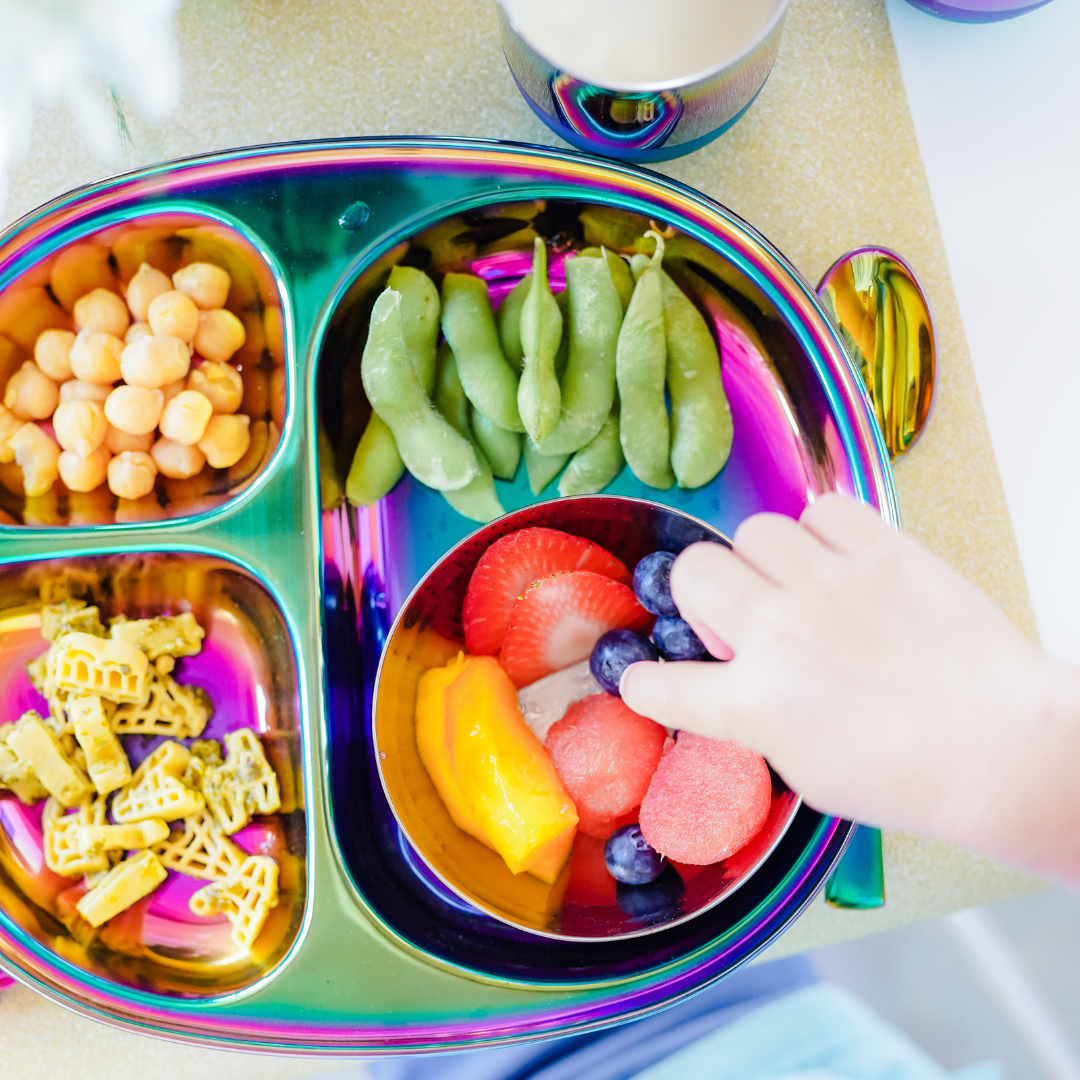
The Rainbow Plate: Why a Colorful Meal is a Healthier Meal
|
|
Time to Read: 5 min
|
|
Time to Read: 5 min
When it comes to nutrition, the saying "eat the rainbow" (or the rainbow plate) isn't just a catchy phrase; it's grounded in science and supported by organizations like the American Academy of Pediatrics (AAP). Below are a few reasons why a wide range of colors on a plate is often associated with a healthier meal.
Founded by a pediatrician and mom of three
Stainless steel is the only kid-friendly material recommended by the American Academy of Pediatrics
We are guided by a Scientific Advisory Council comprised of environmental and medical experts, guiding us in creating the safest products, following the latest science and promoting policy to protect human health and our planet
Want to know more? Check out our story and our products.
The colors in fruits and vegetables demonstrate the various essential nutrients, phytochemicals, and antioxidants that they contain. Here's a breakdown of colors in relation to nutrition:
These colors are often indicative of high vitamin C content (ascorbic acid) and beta-carotene. Vitamin C is a potent antioxidant, crucial for immune support and collagen production. Beta-carotene is a precursor to vitamin A, essential for vision and skin health.
Leafy greens like spinach and kale boast an abundance of folate (vitamin B9), iron, and calcium. Folate is vital for DNA synthesis and red blood cell formation, while iron and calcium are critical for overall health.
Blueberries, blackberries, and purple grapes owe their striking colors to anthocyanins, potent antioxidants linked to improved cognitive function and reduced inflammation.
Yellow vegetables like bell peppers and corn are rich in vitamins, particularly vitamin B6 (pyridoxine) and potassium. Vitamin B6 supports brain development and function, while potassium aids in maintaining healthy blood pressure.
Phytochemicals are natural compounds in plants that contribute to their colors and provide health benefits. Here are some notable examples:
Responsible for the red color in tomatoes, lycopene is associated with a reduced risk of heart disease and certain cancers.
Found in citrus fruits, apples, and tea, flavonoids possess antioxidant properties that protect cells from oxidative damage.
These yellow pigments in foods like spinach and corn are crucial for eye health, particularly in preventing age-related macular degeneration.
The American Academy of Pediatrics emphasizes the importance of a balanced diet rich in fruits and vegetables for children's overall health and development. Encouraging a wide variety of colorful produce in children's diets helps ensure they receive a broad spectrum of essential nutrients and antioxidants.
Incorporating a variety of colors into your family's meals is a scientifically supported strategy for optimizing nutrition and promoting health. So, when you make meals, think of the colors as a sign that your little one’s food is packed with the things their body needs to keep them happy and healthy.
The American Academy of Pediatrics (AAP) released a report in July 2018 suggesting ways that families can limit exposure to certain chemicals at mealtime, including “the use of alternatives to plastic, such as glass or stainless steel, when possible.” The report explained that “…some additives are put directly in foods, while “indirect” additives may include chemicals from plastic, glues, dyes, paper, cardboard”. Further, “Children are more sensitive to chemical exposures because they eat and drink more, relative to body weight, than adults do, and are still growing and developing.” While stainless steel items meet the recommendation to avoid plastic products in children, Ahimsa® products have the obvious advantage of not breaking like glass.
According to the Steel Recycling Institute, steel can be recycled over and over and over again without losing its integrity and requires less energy to recycle than to make anew. Most plastic unfortunately ends up in landfills and it is estimated to take 700 years to decompose. Our special coloring process that allows Ahimsa® products to be fully metal is environmentally friendly, so it does not produce toxic run-off into the ecosystem.
No. Our steel is durable, so it won’t break or shatter with everyday use, like glass. And it won’t peel, like other colored stainless steel products you’ve seen. We use a special process that allows the colors to naturally occur in the metal.
Our products are meant to last, you can use Ahimsa at ages 1, 8 and 18! We thoughtfully design our products to be safe for little ones and our planet while reducing consumption. Once your child outgrows the Starting Solids Set and can use regular cups and utensils, the training cup is the perfect size rinse cup in the bathroom, the infant spoon doubles as a tea stirrer and the bowl is great for snacks or as an additional compartment to our modular divided plate. Our plates are great for any age as they encourage choosing a variety of healthy foods at each meal and help visualize portion sizes easily. It’s the lasting beauty of stainless steel - grows with your child and reduces waste.

